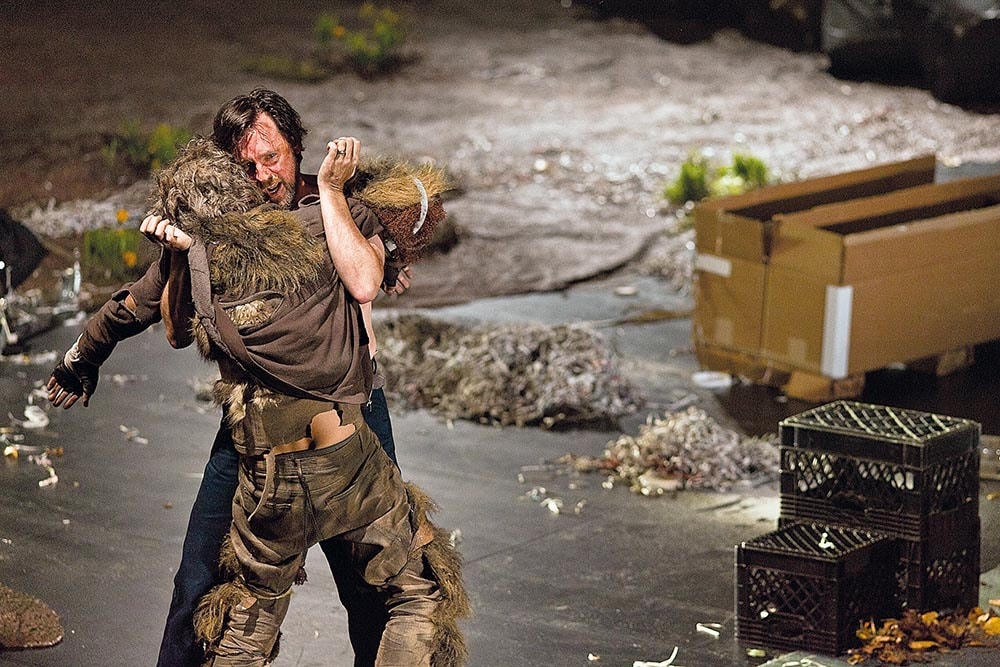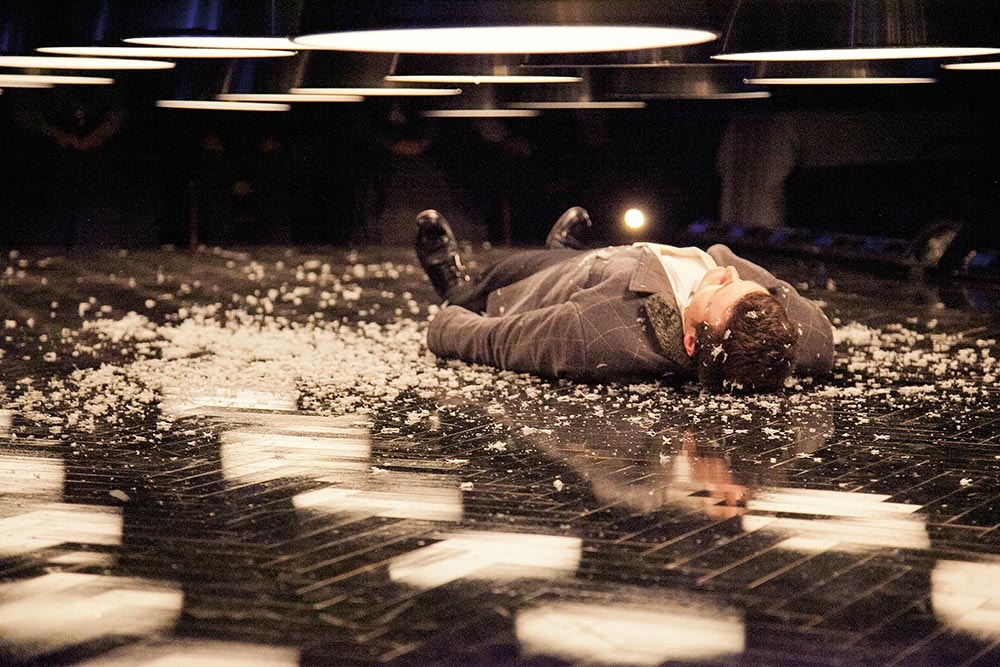The most riveting opera of the 2013–14 season—comedy! tragedy! anarchy! revolution! decapitation!—occurred not on the grand stages of New York, London or Vienna, but in the otherwise benign city of San Diego. In March, San Diego Opera general director Ian Campbell, who 30 years ago rescued the foundering company and turned it into a celebrated home for opera in the grand tradition, unexpectedly convinced his board to dissolve the company one year shy of its 50th anniversary. The scenario he offered to those board members present (many were not, self-immolation not having been announced as an agenda item) was that opera in general, and the company in particular, were in an irreversible death spiral, and that it would be the better part of valor to accept dissolution rather than face inevitable bankruptcy.
The response from the company and the community was louder than the boos rained down on errant tenors by the loggionisti at La Scala. San Diego’s staff and musicians had no inkling of the announcements, nor did major funders or city officials. Campbell’s peers in the opera community scratched their heads in WTF perplexity: the company carried no debt, no accumulated deficit, and there was cash in the bank. Whatever ailments San Diego suffered—declining box-office revenues and contributed income, an aging audience, competition with other forms of entertainment—were a common cold in an industry that has endured for 500 years.
“This course of action will allow the opera to go out with dignity,” Campbell told the press, but it was he who would make an undignified exit, pursued by a bullish community that refused to capitulate. In a move that has parallels to artistic director Adrian Hall’s mid-’70s rebellion at Rhode Island’s Trinity Repertory Company, but in reverse, a board putsch eliminated half the trustees, dismissed Campbell, installed new leadership and, in a matter of weeks, raised more than $2 million in donations of all sizes. Leaders from the opera world were brought in to rethink the company’s stodgy business model, moving away from the exclusive presentation of grand opera in favor of a more diverse repertoire. The San Diego Opera is now poised to celebrate that 50th anniversary. With dignity.
Campbell may be the most infamous Cassandra in the field, but he is not alone. The apocalyptic mentality stretches to mainstream media, the blogosphere and, depressingly, other leaders of the faith: Peter Gelb, general director of the Metropolitan Opera, readying to rumble with the Met’s unions, told Deutsche Welle: “I’m trying to avoid the situation that has become prevalent in the nonprofit performing arts world—particularly with opera companies in recent months and years—where companies are facing extinction because of an unsustainable business model.”
Prevalent? Extinction? Really? You can count the number of notable companies that have become extinct in the past year on one baton: New York City Opera, which, after a decade of artistic and financial decline, was as doomed as Mimi. True, in the past decade the companies of Baltimore, Cleveland, Orlando and a handful of others have dissolved, but most were in a precarious financial state long before the recession of 2008 pushed them into the pit. Though the loss of an opera company is painful to a community, and to the artists and staff who lose their jobs, the reality is that 10 companies dying in 10 years in a field of more than 100 professional opera companies does not an epidemic make.
Opera is still big. It’s the companies that are getting smaller. Far from a harbinger of “extinction,” the opera industry is boldly committed to operational right-sizing and new-product development, which may be ushering in a golden age of the art form. Well-run companies are reducing the number of productions and performances and reallocating their portfolios to include contemporary works and Broadway classics alongside standard opera fare. They are commissioning librettists and performers and creating development programs to support them. Most important, they are not compromising quality or, in the words of San Diego’s Campbell, “putting water in the beer.” They are pruning dead branches, letting sunlight through to let little things grow.
Opera has abandoned the notion that one proscenium fits all. Companies are exploring new venues, from small (black-box theatres) to large (stadiums) to extra-large (live global broadcasts). The results can be resplendent: An UrbanArias production of Gregory Spears and Kathryn Walat’s Paul’s Case, directed by Kevin Newbury and presented at HERE Arts Center’s 150-seat space as part of last year’s PROTOTYPE festival in New York City, offered an emotionally devastating (in a good way; this is, after all, opera) performance, the power of the music and story enhanced exponentially through proximity.
There are also terrific disappointments when venue and story are mismatched: the Met’s production of Nico Muhly and Craig Lucas’s Two Boys, directed by Bartlett Sher, took a story of pathological Internet intimacy (can two men be any closer than through the two-way mirror of a computer screen?), and blew it up with a cacophony of projections, choristers and dancers. The composer’s lush score and careful setting of words was lost in spectacle.
The re-positioning of large companies is matched by the radical emergence of “indie” companies and producers that are fostering new works. These are not the sophomoric conceits of a previous generation of directors who put modern-dress interpretations of Mozart in swimming pools. These bespoke works involve accomplished composers and librettists who mine traditional literature, contemporary narratives and film classics for tales of our time, blurring the distinctions between opera, music-theatre and musical theatre. Label at your own peril.

Beth Morrison, whose eponymous producing company, Beth Morrison Projects (BMP), commissions, develops and curates what she calls “new music-theatre,” is the That Girl of today’s indie opera scene, complete with jet-black bangs. Her name has become synonymous with an imperturbable capacity for making things happen.
“‘Indie’ means different things to different people,” Morrison says. “It signifies an inclusive writing style that is cross-genre. There are no longer boundaries.” For Morrison the process begins with the composer. “I’m looking for good music,” she says, immediately correcting herself: “I’m looking for great music.” She matches composers with librettists, mixes them with dramaturgs and directors, raises money, scouts venues, partners with presenters and promotes like hell.
That BMP doesn’t have a brick-and-mortar home presents continuous logistical headaches, but also a strategic advantage. With a tiny production staff that operates out of her studio apartment/global headquarters, she is not hamstrung by the fixed costs of rent and labor that a theatre and staff require. Instead, she partners with festivals, arts centers and opera companies to present. Compared to traditional companies, where contributed income outweighs earned income, her situation is reversed—fees from presenters are how she hedges her bets.
BMP’s financial exposure can be considerable, now that her entrepreneurial energy is more widely distributed. Her early days of developing one or two five-figure productions are over. Between Beth Morrison Projects, the annual PROTOTYPE Festival, which she co-presents, and a new partnership with the Los Angeles Opera, she is percolating nonstop. She is aware of the risks, but accepting of the consequences: “We put tons of fishing lines into the water. I pitch a ton of venues. I see what bites. If they bite all at once, we’re screwed.”
BMP is a founding member of the New York Opera Alliance, a consortium of smaller companies—Gotham Chamber Opera, American Lyric Theater, Chelsea Opera, Harlem Opera Theater among them—who embrace the congenital New York fixation on the new. And though Gotham will always generate a gravitational pull on the opera cosmos, there are dynamic outposts of innovation across the country.
In Los Angeles, the ebullient director/producer Yuval Sharon founded the Industry, which has been dazzling the city with immersive site-specific works. For Christopher Cerrone’s Invisible Cities, based on the Italo Calvino novel of Marco Polo’s adventures, Sharon fused opera, dance and technology in a production at Los Angeles’s Union Station. Audiences followed the story through wireless headphones as everyday train passengers passed by. The success of Invisible Cities far exceeded expectations. According to Sharon, nine performances were added to the original 13 scheduled, with each new performance selling out in a matter of minutes.
“I consider the architecture of the space a crucial part of the performance,” says Sharon. “We don’t take a particular piece and put it into a pre-existing container. Instead we ask, ‘What does the piece need to communicate to an audience?’ In this case a train station seemed to be the most perfect realization for the piece.”
When Gotham Chamber Opera was invited to produce an in situ performance at the Metropolitan Museum, artistic director Neal Goren was immediately inspired to present Monteverdi’s tale of two knights, Il combattimento di Tancredi e Clorinda, in the splendorous Arms and Armament Court. But the 20-minute work needed a companion piece, for which he turned to Gotham’s composer-in-residence, Lembit Beecher.
“It was an opportunity to respond to two different things: the Monteverdi and the space,” says Beecher. In collaboration with librettist Hannah Moscovitch and director Robin Guarino, the result was I Have No Stories to Tell You, a tale of a soldier’s return from war, presented in the museum’s adjoining Medieval Scupture Hall. The venue, far from inhibiting Beecher’s palette, provided an ideal resonance for the story, as well as for the chamber ensemble for which it was written.
Beecher is one of four composers—including Missy Mazzolli, Andrew Norman and David T. Little—who have been chosen for a composer-in-residence program, led by Opera Philadelphia in partnership with Gotham and Music-Theatre Group. Funded by the Andrew W. Mellon Foundation, the three-year salaried position allows for observing all aspects of production and administration. There no obligation for the composer to create a new work or for the company to present one. The goal is to allow composers to hone their skills.
“Writing opera requires much more than desire,” says Beecher. “It requires resources.” The residency “fills that hole in conservatories where there is little opera training.” The greatest luxury, however, is that it enables him to succeed without expectation and fail without harm.


